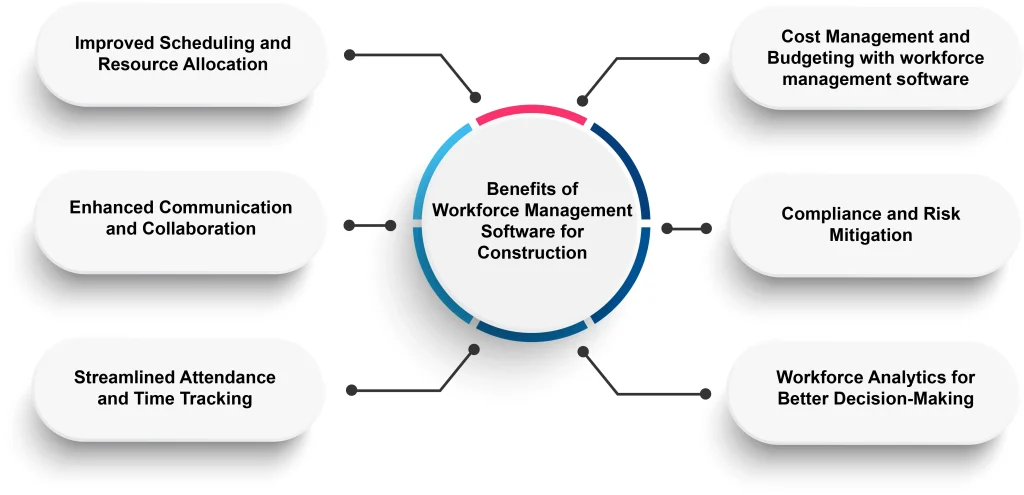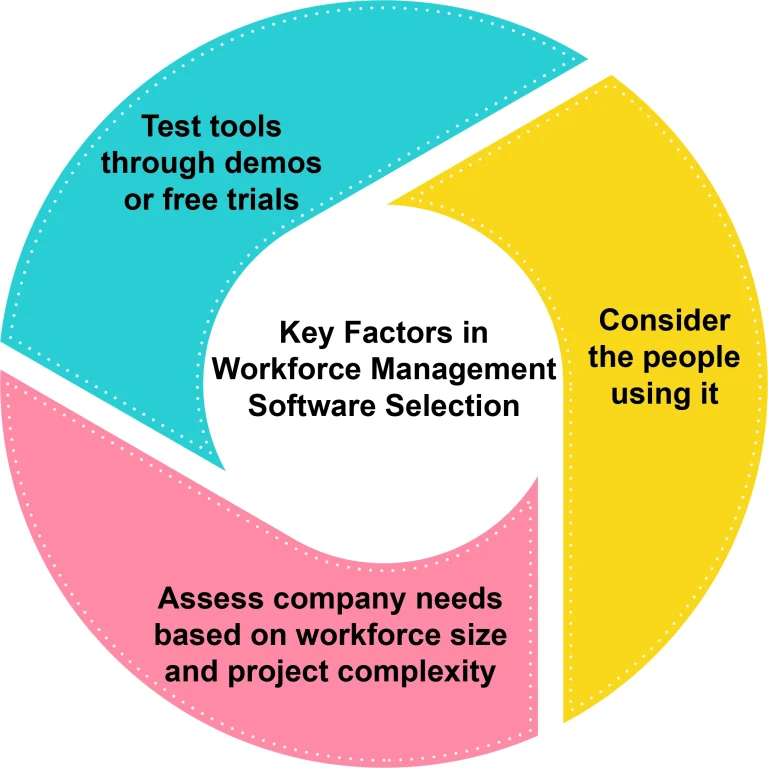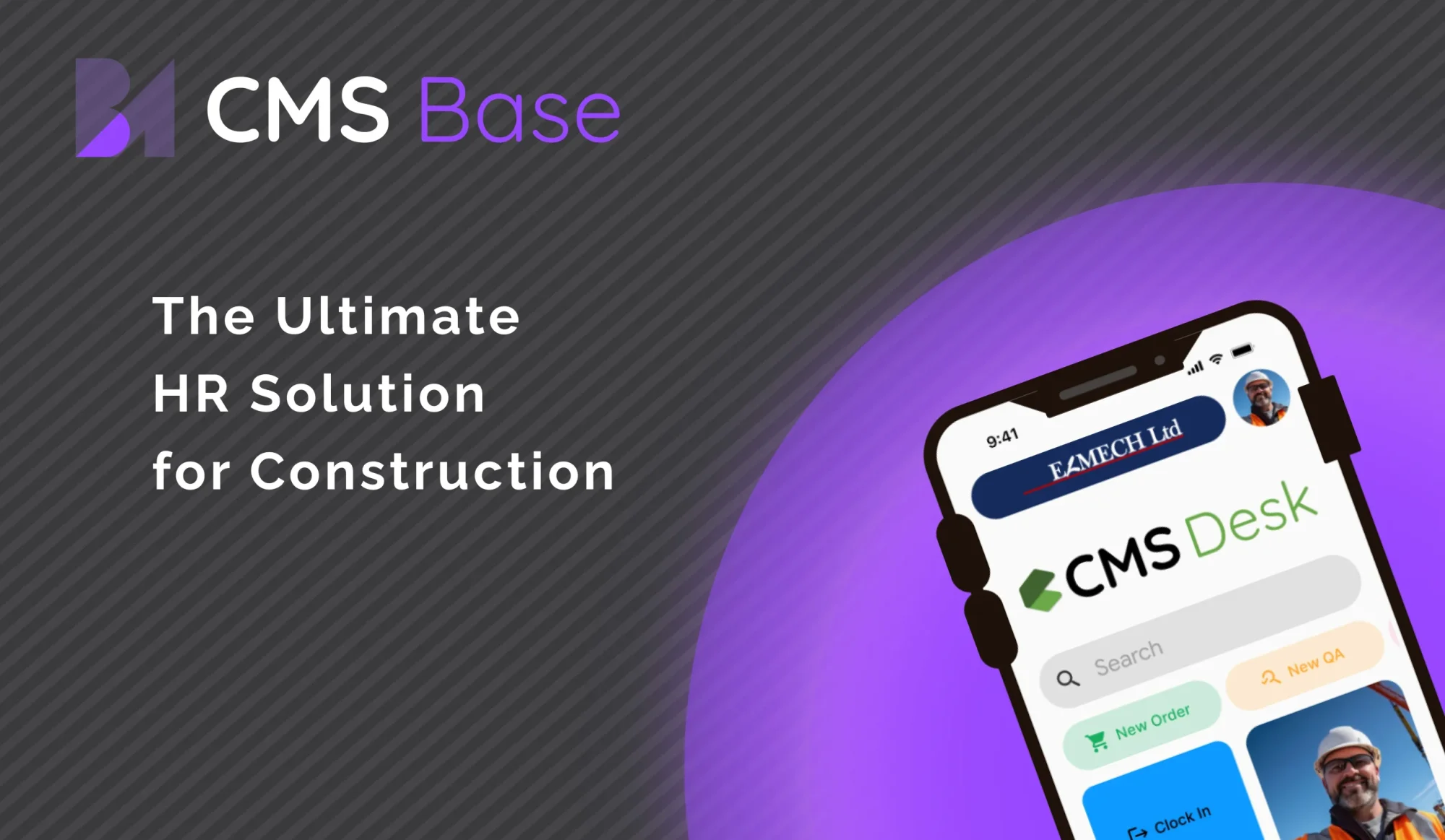
Managing a construction workforce can be challenging, especially with common issues like scheduling, communication, and compliance. Unfortunately, traditional workforce management methods are no longer sufficient. In fact, they struggle to handle the increasing complexity of modern construction projects.
So, what’s the solution?
Workforce management software. These tools offer numerous benefits that help make your team more efficient in both costs and operations. One such solution is CMS Base, a platform tailored specifically for construction teams, helping to streamline workforce coordination, automate scheduling, and improve site-wide communication.
Benefits of Workforce Management Software for Construction
Improved Scheduling and Resource Allocation
Effective resource allocation is crucial for any business. Workforce management software simplifies this by automating scheduling tasks, relieving senior staff members from manual work.
By automatically scheduling workers according to project needs and availability, you ensure continuous progress on tasks. You can set specific rules to guarantee that the right people are assigned to the right jobs. This automation helps reduce downtime, improves project timelines, and accelerates your company’s growth.
Enhanced Communication and Collaboration
This software significantly improves communication between team members. It offers a central platform where managers and on-site workers can receive real-time updates on tasks and project changes. As a result, teams collaborate seamlessly, no matter their location.
Streamlined Attendance and Time Tracking
Manually tracking attendance and project hours is time-consuming and error-prone. Thankfully, workforce management software automates this process, eliminating human error.
Moreover, using the system consistently allows you to identify productivity and efficiency gaps. For companies aiming to scale, this automated data collection saves valuable time and helps pinpoint issues quickly.
Cost Management and Budgeting with Workforce management Software
It helps you reduce labour costs by highlighting inefficiencies through real-time tracking. Consequently, you can accurately estimate labour costs and provide precise quotations to customers.
Additionally, automated payroll integration smooths workflow and minimises costly errors. If you’re serious about controlling and managing your expenses, implementing workforce management software is highly recommended.
Compliance and Risk Mitigation
Compliance requirements are constantly evolving, and digital tools help ensure your team stays audit-ready by managing certifications and credentials — a responsibility traditionally handled by HR in construction companies, especially in high-risk environments. Fortunately, this application software helps manage compliance risks by keeping digital records of worker credentials, licenses and training.
Moreover, you can set alerts that notify you immediately if a project risks non-compliance. Thus, the software offers peace of mind and significant support to construction businesses.
Workforce Analytics for Better Decision-Making
Not every team member performs equally. Workforce management software provides detailed analytics, allowing you to make informed decisions based on past performance.
You can identify productivity patterns and anticipate bottlenecks, ensuring smoother operations in future projects. Understanding your workforce performance helps you allocate resources more effectively and efficiently.

Key Features to Look for in Construction Workforce Management Software
While these software tools offer many features, here are the key ones to consider:
- Mobile accessibility:
Ensure teams can access project information anytime, anywhere, reducing communication errors.
Integration with Other Tools:
Ensure teams can access project information anytime, anywhere, reducing communication errors.
Scalability:
Look for software that supports growth, especially workforce management across multiple sites.
Custom Reporting:
Tracking metrics is crucial. Ensure the software allows custom reports tailored to your team’s needs.
Research carefully before choosing software. Avoid rushing this decision; a thoughtful choice greatly benefits your business long-term.
Selecting the Right Workforce Management Software
When selecting your software solution, keep these important steps in mind:
- Assess company needs
Firstly, choose software capable of handling your current and future workforce size and project complexity. Some software solutions are specifically designed for simpler projects, while others support more complex needs.
- Test tools through demos or free trials
Secondly, avoid committing too quickly. Always use demos and free trials extensively. This ensures the software meets your expectations and suits your team’s needs before making a purchase.
- Consider the people using it
Lastly, focus on the end-user experience. Even excellent software can perform poorly if employees struggle to use it. Confirm that your team finds the software intuitive and easy to operate.

Managing Your Workforce More Effectively
Ultimately, a more efficient workforce allows your business to grow without unnecessary struggles. This software provides essential data to allocate resources effectively, improve cost efficiency, and enhance overall operational performance.
If you’re still looking for a workforce management software, try a demo of CMS Desk today.
Frequently Asked Questions
1. What is workforce management software?
This software is a platform that helps businesses schedule, track, and manage their workforce efficiently. In construction, it addresses challenges like scheduling, attendance tracking, and compliance.
2. Why is workforce management software important for construction companies?
It simplifies workforce scheduling, improves communication, tracks attendance accurately, and ensures compliance with labor laws. It also enhances overall productivity and cost management.
3. What are the key benefits of workforce management software for construction?
Benefits include automated scheduling, real-time communication, reduced labor costs, better compliance management, and insights into workforce performance.
4. How does workforce management software work in construction?
The software digitizes processes like scheduling, time tracking, and payroll integration. Workers and managers can access updates via mobile devices, ensuring seamless coordination.
5. Can small construction businesses benefit from workforce management tools?
Yes, small construction businesses can use these tools to improve scheduling, reduce manual errors, and save time, making them more competitive.
Any questions? Get in Touch
